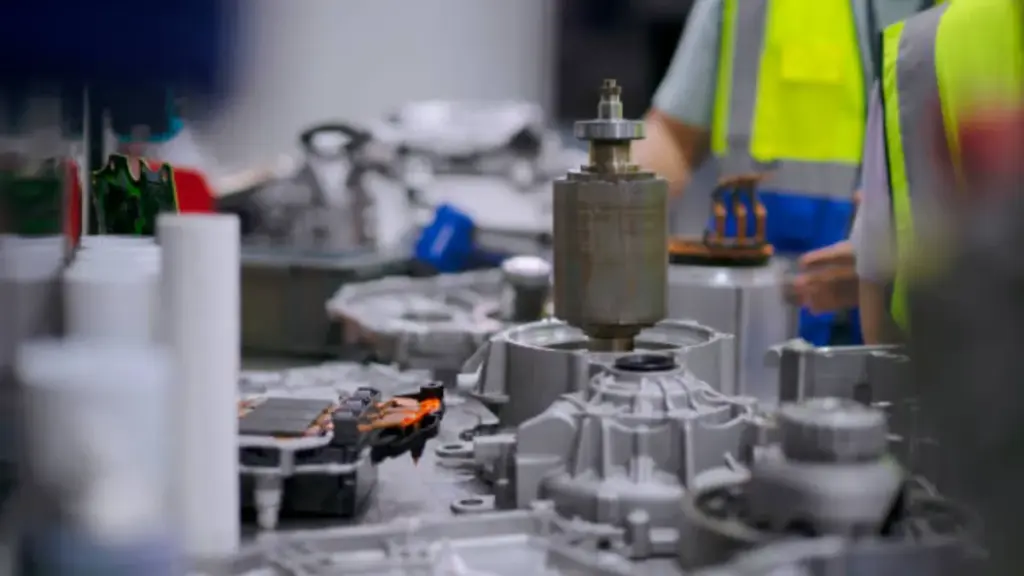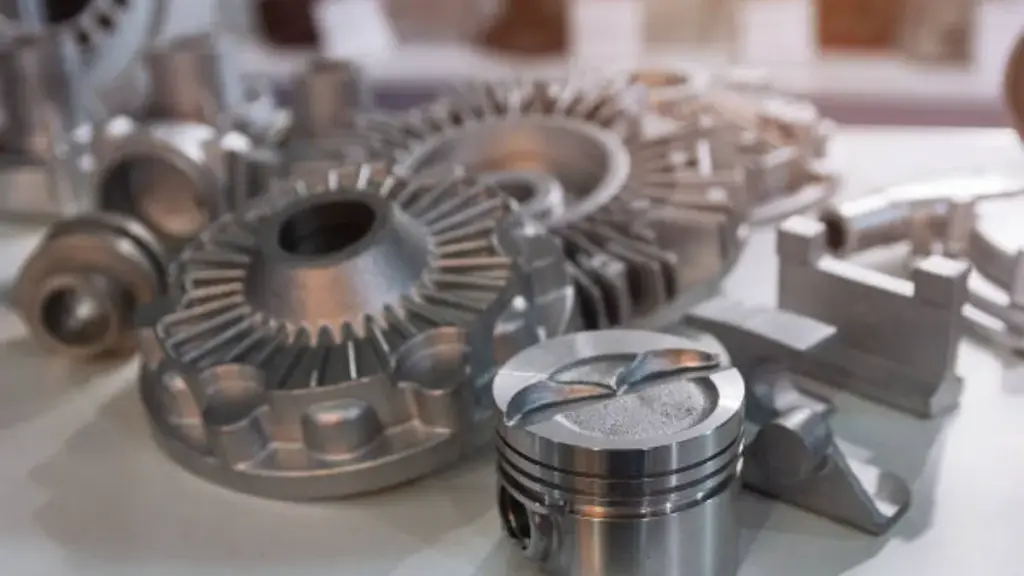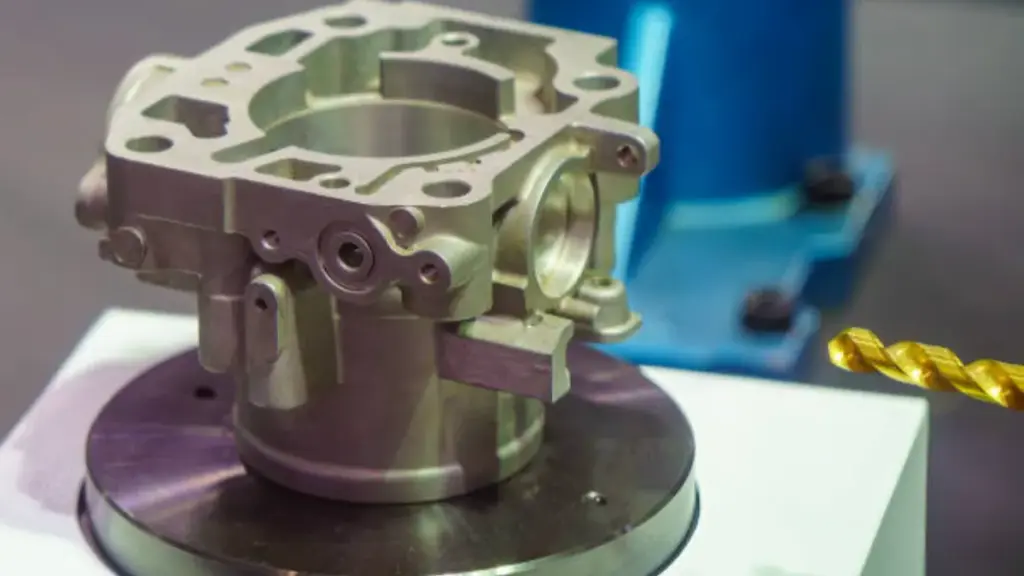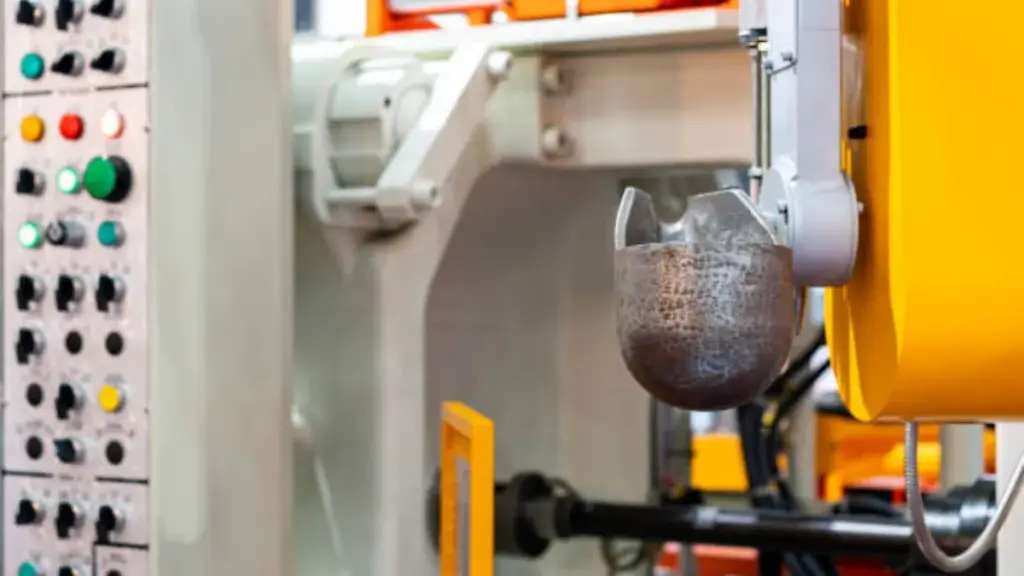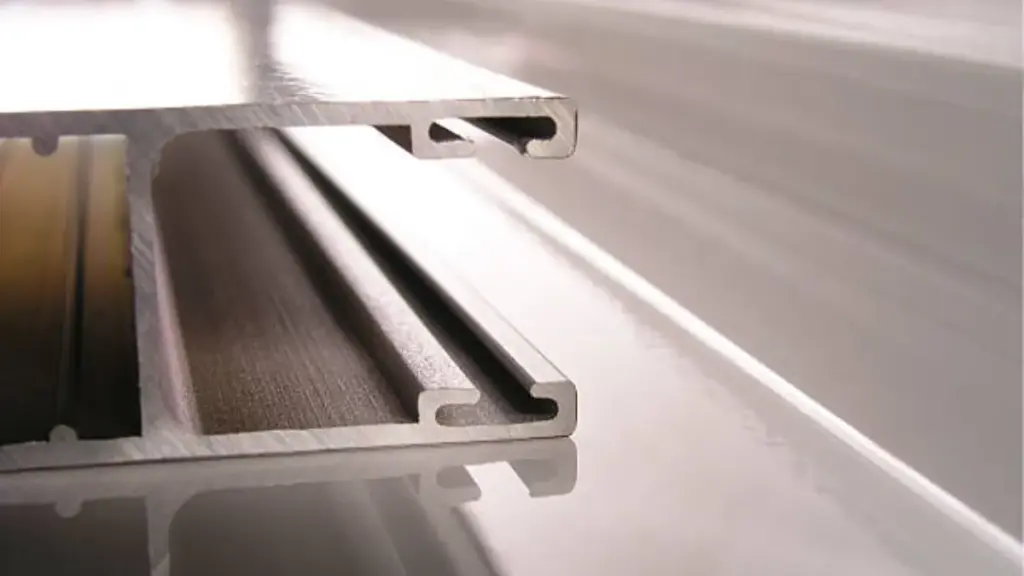CNC मशीनिंग एक अत्याधुनिक निर्माण प्रक्रिया है जो मशीन टूल्स को संचालित करने और हेरफेर करने के लिए कम्प्यूटरीकृत नियंत्रण का उपयोग करती है. इस तकनीक ने उत्पादों को डिज़ाइन और उत्पादित करने के तरीके में क्रांति ला दी है, बढ़ी हुई सटीकता के लिए अनुमति, क्षमता, और अनुकूलन. इस गाइड में, हम सीएनसी मशीनिंग की मूल बातें खोज लेंगे, इसके लाभों सहित, मशीनों के प्रकार, अवयव, प्रक्रियाओं, सामग्री और अधिक .
CNC मशीनिंग क्या है?
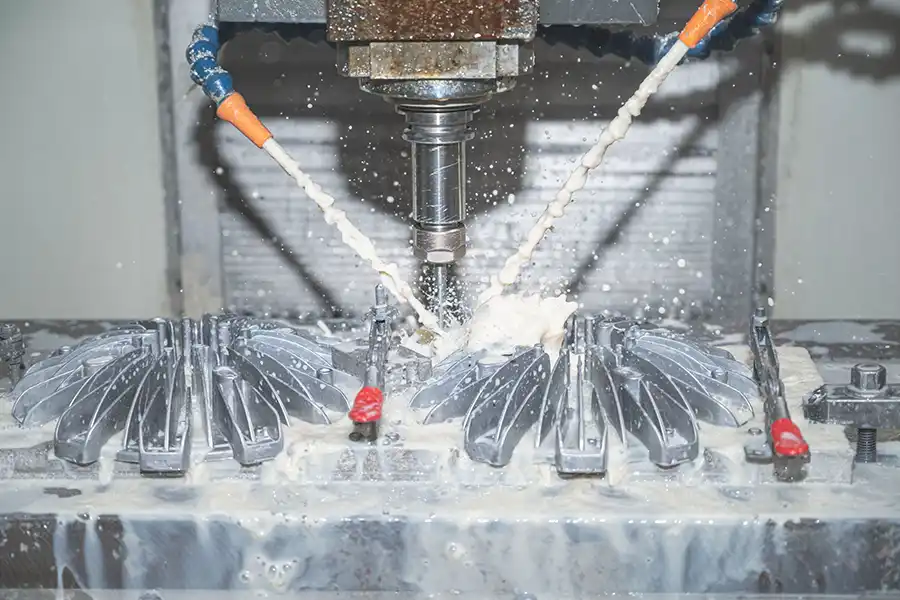
सीएनसी मशीनिंग, जो खड़ा है कंप्यूटर संख्यात्मक नियंत्रण मशीनिंग, एक विनिर्माण प्रक्रिया है जो मशीन टूल्स को संचालित करने और हेरफेर करने के लिए कम्प्यूटरीकृत नियंत्रण का उपयोग करती है. यह तकनीक के लिए अनुमति देती है स्वचालित और सटीक जटिल घटकों और भागों बनाने के लिए विभिन्न सामग्रियों को आकार देना.
सीएनसी मशीनिंग का लाभ
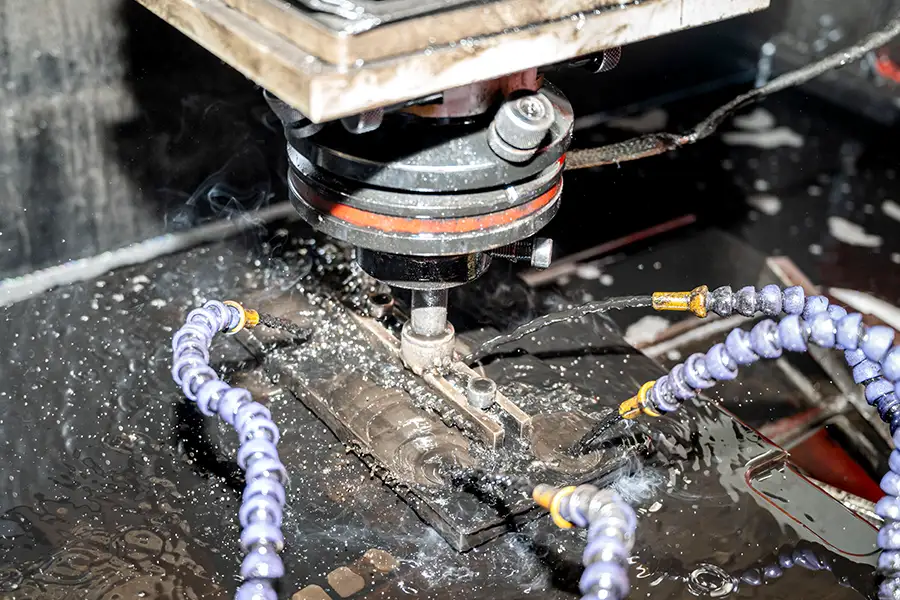
सीएनसी मशीनिंग लाभ की एक विस्तृत श्रृंखला प्रदान करता है, इसे आधुनिक विनिर्माण प्रक्रियाओं में एक बहुमुखी और अपरिहार्य तकनीक बनाना.
सटीक और सटीकता
सीएनसी मशीनिंग के प्रमुख लाभों में से एक अत्यधिक सटीक और सटीक भागों का उत्पादन करने की क्षमता है. कंप्यूटर-नियंत्रित स्वचालन के साथ, सीएनसी मशीनें तंग सहिष्णुता और स्थिरता प्राप्त कर सकती हैं जो मैनुअल प्रक्रियाओं के साथ दोहराने के लिए मुश्किल हैं.
दक्षता और उत्पादकता
सीएनसी मशीनिंग पारंपरिक विनिर्माण विधियों की तुलना में दक्षता और उत्पादकता में वृद्धि प्रदान करता है. प्रक्रियाओं का स्वचालन भागों के उत्पादन के लिए आवश्यक समय और श्रम को कम करता है, तेजी से टर्नअराउंड समय और उच्च आउटपुट के परिणामस्वरूप.
लागत प्रभावशीलता
जबकि सीएनसी मशीनिंग उपकरणों में प्रारंभिक निवेश महत्वपूर्ण हो सकता है, दीर्घकालिक लागत बचत पर्याप्त है. सीएनसी मशीनिंग के स्वचालन और दक्षता से श्रम लागत कम हो सकती है, कम से कम सामग्री अपशिष्ट, और उत्पादन में समग्र लागत बचत.
जटिल डिजाइन
सीएनसी मशीनिंग जटिल और जटिल डिजाइनों के निर्माण के लिए अनुमति देता है जो पारंपरिक मशीनिंग विधियों के साथ प्राप्त करना मुश्किल या असंभव होगा. जटिल टूलपैथ और ज्यामिति को प्रोग्राम करने की क्षमता निर्माताओं के लिए डिजाइन संभावनाओं की दुनिया खोलती है.
सीएनसी मशीनों के प्रकार
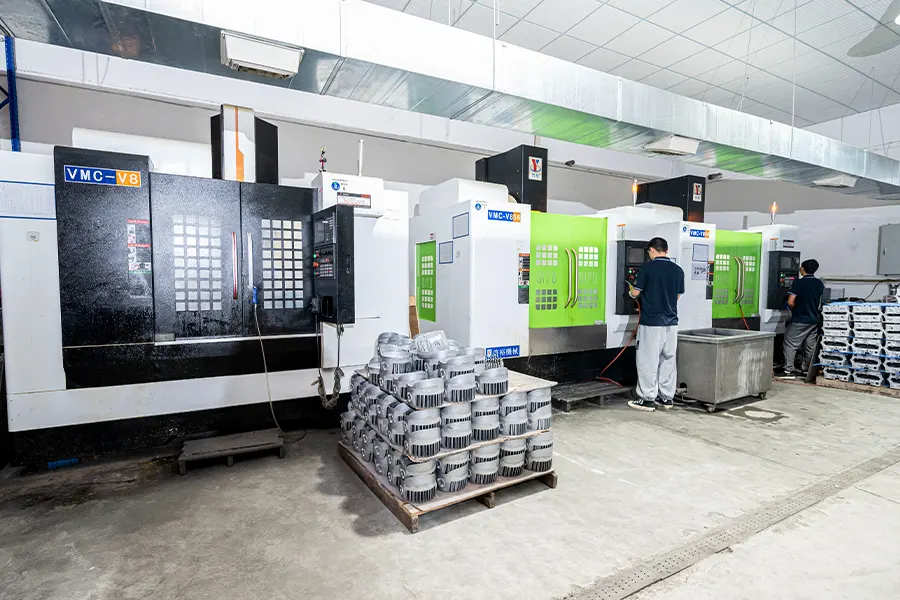
सीएनसी मिलिंग मशीनें
CNC मिलिंग मशीनें एक वर्कपीस से सामग्री को हटाने के लिए रोटरी कटर का उपयोग करती हैं. वे बहुमुखी मशीनें हैं जो आकार और आकारों की एक विस्तृत श्रृंखला बनाने में सक्षम हैं.
सीएनसी टर्निंग मशीन
CNC टर्निंग मशीनों का उपयोग वर्कपीस को घुमाकर बेलनाकार भागों को बनाने के लिए किया जाता है, जबकि एक कटिंग टूल सामग्री को हटा देता है. ये मशीनें घूर्णी समरूपता के साथ भागों के उत्पादन के लिए आदर्श हैं.
सीएनसी प्लाज्मा कटर
सीएनसी प्लाज्मा कटर धातु जैसे सामग्रियों के माध्यम से कटौती करने के लिए आयनित गैस के एक उच्च-वेग स्ट्रीम का उपयोग करते हैं. वे आमतौर पर धातु निर्माण और कटिंग अनुप्रयोगों के लिए उपयोग किए जाते हैं.
सीएनसी लेजर कटर
सीएनसी लेजर कटर सटीक और गति के साथ सामग्री के माध्यम से कटौती करने के लिए एक उच्च शक्ति वाले लेजर का उपयोग करते हैं. वे जटिल काटने और उत्कीर्णन अनुप्रयोगों के लिए आदर्श हैं.
सीएनसी मशीनों के मूल घटक
नियंत्रक
नियंत्रक CNC मशीन के मस्तिष्क के रूप में कार्य करता है, डिज़ाइन डेटा की व्याख्या करना और इसे मशीन टूल्स के लिए मोशन कमांड में परिवर्तित करना.
मशीनी औज़ार
मशीन टूल वर्कपीस को आकार देने और काटने के लिए उपयोग किए जाने वाले भौतिक उपकरण हैं. यह आवश्यक संचालन करने के लिए CNC प्रणाली द्वारा नियंत्रित किया जाता है.
workpiece
वर्कपीस कच्चा माल है जिसे मशीनिंग प्रक्रिया के दौरान आकार और संशोधित किया जा रहा है. यह प्रसंस्करण के लिए मशीन टूल के लिए सुरक्षित है.
काटने का उपकरण
कटिंग टूल वह उपकरण है जो वांछित आकार बनाने के लिए वर्कपीस से सामग्री को हटाता है. यह सटीक कटिंग संचालन करने के लिए मशीन टूल द्वारा नियंत्रित किया जाता है.
सीएनसी मशीनिंग स्टेप बाय स्टेप प्रोसेस
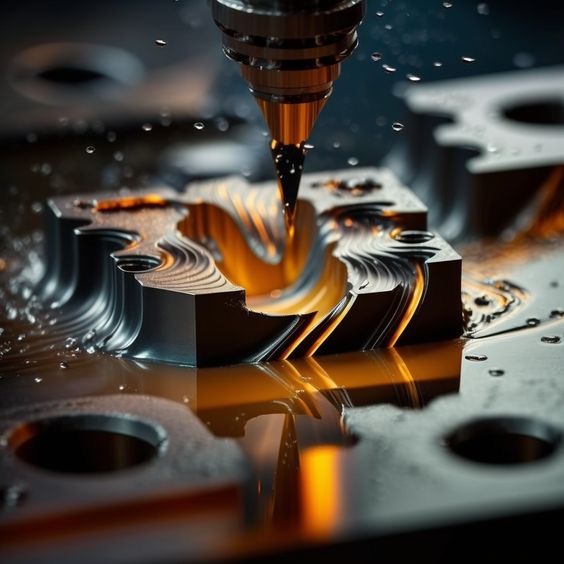
सीएनसी मशीनिंग मूल बातें की गहरी समझ हासिल करने के लिए, इसके परिचालन तंत्र को समझना आवश्यक है. आइए निम्नलिखित पांच चरणों का पता लगाएं.
#1: भाग डिजाइन करना
CNC मशीनिंग प्रक्रिया में पहला कदम CAD सॉफ़्टवेयर का उपयोग करके भाग को डिजाइन कर रहा है. डिजाइनर भाग का एक डिजिटल मॉडल बनाता है, आयामों सहित, विशेषताएँ, और सहिष्णुता.
#2: प्रोग्रामिंग मशीन
एक बार भाग डिज़ाइन किया गया है, CAM सॉफ्टवेयर CNC मशीन के लिए टूलपैथ और निर्देश उत्पन्न करता है. ये निर्देश मशीन टूल्स के आंदोलनों और प्रदर्शन किए जाने वाले संचालन को निर्दिष्ट करते हैं.
#3: मशीन की स्थापना
CNC मशीन CAM सॉफ्टवेयर द्वारा उत्पन्न निर्देशों के अनुसार स्थापित की गई है. इसमें वर्कपीस लोड करना शामिल है, इसे मशीन टूल के लिए सुरक्षित करना, और विशिष्ट ऑपरेशन के लिए मशीन को कैलिब्रेट करना.
#4: ऑपरेशन को अंजाम देना
मशीन सेट अप और प्रोग्राम के साथ, CNC मशीनिंग ऑपरेशन शुरू हो सकता है. मशीन पूर्व-परिभाषित टूलपैथ का अनुसरण करती है और डिजाइन में निर्दिष्ट वर्कपीस को आकार देने के लिए कटिंग ऑपरेशन करती है.
#5: गुणवत्ता नियंत्रण
मशीनिंग प्रक्रिया के दौरान, यह सुनिश्चित करने के लिए गुणवत्ता नियंत्रण उपायों को लागू किया जाता है कि तैयार भाग आवश्यक विनिर्देशों को पूरा करता है. अंतिम उत्पाद की सटीकता और गुणवत्ता को सत्यापित करने के लिए निरीक्षण और माप किए जाते हैं.
सीएनसी मशीनिंग में उपयोग की जाने वाली सामग्री
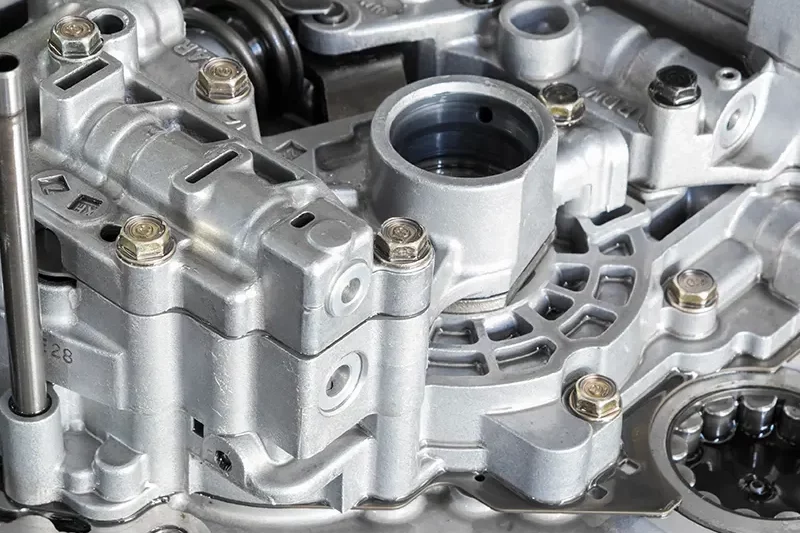
ऐसी सामग्री की विस्तृत सरणी हैं जो आमतौर पर सीएनसी मशीनिंग प्रक्रियाओं में उपयोग की जाती हैं.
धातुओं
एल्यूमीनियम जैसे धातु, इस्पात, और टाइटेनियम का उपयोग आमतौर पर उनकी ताकत के कारण सीएनसी मशीनिंग में किया जाता है, टिकाऊपन, और मशीनीकरण. ये सामग्री विभिन्न उद्योगों में अनुप्रयोगों की एक विस्तृत श्रृंखला के लिए आदर्श हैं.
प्लास्टिक
एबीएस की तरह प्लास्टिक, पीवीसी, और ऐक्रेलिक उनकी बहुमुखी प्रतिभा के कारण सीएनसी मशीनिंग के लिए लोकप्रिय विकल्प हैं, हल्के गुण, और लागत-प्रभावशीलता. वे उन अनुप्रयोगों में उपयोग किए जाते हैं जहां वजन, संक्षारण प्रतिरोध, और सौंदर्यशास्त्र महत्वपूर्ण हैं.
लकड़ी
लकड़ी की सामग्री जैसे कि दृढ़ लकड़ी, सॉफ्टवुड, और प्लाईवुड का उपयोग सीएनसी मशीनिंग में भी फर्नीचर जैसे अनुप्रयोगों के लिए किया जाता है, कैबिन सामग्री, और सजावटी सामान. लकड़ी एक प्राकृतिक सौंदर्य और आसान मशीनबिलिटी प्रदान करता है.
सम्मिश्र
कंपोजिट मटेरियल, जो अलग -अलग गुणों के साथ दो या दो से अधिक सामग्रियों से बने होते हैं, सीएनसी मशीनिंग में लोकप्रियता हासिल कर रहे हैं. कार्बन फाइबर, फाइबरग्लास, और केवलर कंपोजिट उच्च शक्ति-से-वजन अनुपात प्रदान करते हैं और एयरोस्पेस में उपयोग किए जाते हैं, ऑटोमोटिव, और खेल माल उद्योग.
सीएनसी मशीनिंग के आवेदन
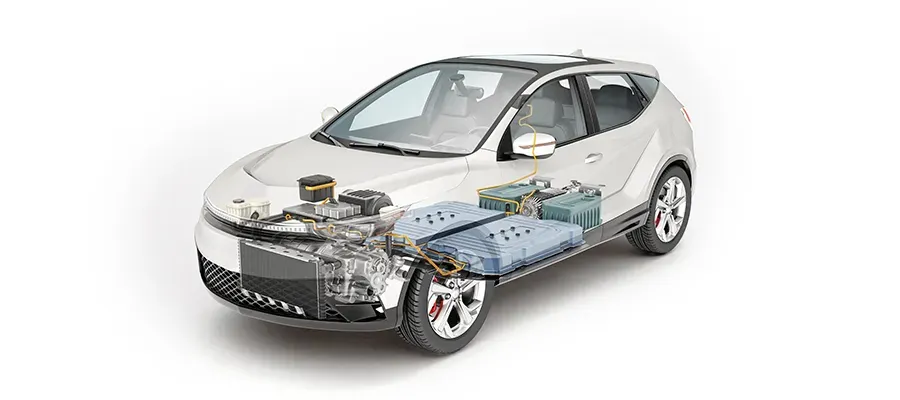
इसकी बहुमुखी प्रतिभा और कई फायदे के कारण, CNC मशीनिंग विभिन्न औद्योगिक क्षेत्रों में व्यापक अनुप्रयोग पाता है.
एयरोस्पेस उद्योग
एयरोस्पेस उद्योग विमान घटकों के उत्पादन के लिए सीएनसी मशीनिंग पर बहुत अधिक निर्भर करता है, इंजन भागों, और संरचनात्मक तत्व. सटीकता, शुद्धता, और सीएनसी मशीनिंग की पुनरावृत्ति यह एयरोस्पेस विनिर्माण में अपरिहार्य बनाती है.
मोटर वाहन उद्योग
में मोटर वाहन उद्योग, CNC मशीनिंग का उपयोग घटकों की एक विस्तृत श्रृंखला का उत्पादन करने के लिए किया जाता है, इंजन भागों से लेकर बॉडी पैनल तक. सीएनसी मशीनिंग की दक्षता और स्थिरता यह सुनिश्चित करती है कि मोटर वाहन निर्माता उद्योग के मांग गुणवत्ता मानकों को पूरा कर सकते हैं.
चिकित्सा उद्योग
सीएनसी मशीनिंग सर्जिकल इंस्ट्रूमेंट्स के उत्पादन के लिए चिकित्सा उद्योग में एक महत्वपूर्ण भूमिका निभाता है, प्रत्यारोपण, और चिकित्सा उपकरण. तंग सहिष्णुता के साथ जटिल और अनुकूलित भागों को बनाने की क्षमता CNC मशीनिंग को चिकित्सा अनुप्रयोगों के लिए एक पसंदीदा विनिर्माण विधि बनाती है.
इलैक्ट्रॉनिक्स उद्योग
The इलैक्ट्रॉनिक्स उद्योग सर्किट बोर्डों के उत्पादन के लिए सीएनसी मशीनिंग पर निर्भर करता है, बाड़ों, और अन्य इलेक्ट्रॉनिक घटक. सीएनसी मशीनों की सटीक और जटिल काटने की क्षमता इलेक्ट्रॉनिक्स निर्माताओं को सटीक और सटीकता के साथ उच्च गुणवत्ता वाले उत्पाद बनाने में सक्षम बनाती है.
सीएनसी प्रौद्योगिकी में प्रगति
इस खंड में, हम नवीनतम नवाचारों और तकनीकी प्रगति में तल्लीन करेंगे जो सीएनसी मशीनिंग के विकास को प्रेरित कर रहे हैं. डिस्कवर करें कि ये प्रगति कैसे विभिन्न क्षेत्रों में सटीक निर्माण और औद्योगिक प्रक्रियाओं में क्रांति ला रही है.
स्वचालन
स्वचालन प्रौद्योगिकियों में प्रगति ने सीएनसी मशीनिंग में क्रांति ला दी है, उत्पादकता में वृद्धि के लिए अनुमति, कम श्रम लागत, और बेहतर प्रक्रिया दक्षता. स्वचालित उपकरण बदल रहा है, रोबोटिक भार, और एकीकृत गुणवत्ता नियंत्रण प्रणाली केवल कुछ स्वचालन सुविधाएँ हैं जो CNC मशीनिंग संचालन को बढ़ाती हैं.
कृत्रिम होशियारी
कृत्रिम होशियारी (ऐ) कटिंग मापदंडों को अनुकूलित करने के लिए CNC मशीनिंग सिस्टम में एकीकृत किया जा रहा है, टूल वियर की भविष्यवाणी करें, और प्रक्रिया नियंत्रण में सुधार करें. AI एल्गोरिदम मशीनिंग प्रदर्शन और गुणवत्ता को बढ़ाने वाले समायोजन और अनुकूलन करने के लिए वास्तविक समय में डेटा का विश्लेषण करते हैं.
3D मुद्रण एकीकरण
सीएनसी मशीनिंग के साथ 3 डी प्रिंटिंग प्रौद्योगिकियों का एकीकरण विनिर्माण परिदृश्य को बदल रहा है. हाइब्रिड मशीनें जो योजक और घटाव विनिर्माण क्षमताओं को जोड़ती हैं, जटिल ज्यामिति बनाने के लिए नई संभावनाएं प्रदान करती हैं, सामग्री अपशिष्ट को कम करना, और डिजाइन लचीलापन बढ़ाना.
उद्योग 4.0
उद्योग की अवधारणा 4.0, जो विनिर्माण प्रक्रियाओं के डिजिटल परिवर्तन पर केंद्रित है, सीएनसी मशीनिंग में नवाचार कर रहा है. स्मार्ट फैक्ट्रीज़, परस्पर जुड़े मशीनें, और डेटा-संचालित निर्णय लेने से निर्माताओं को उत्पादन का अनुकूलन करने में सक्षम बनाया जा रहा है, दक्षता में वृद्धि, और बदलती बाजार की मांगों के अनुकूल.
निष्कर्ष
निष्कर्ष के तौर पर, सीएनसी मशीनिंग एक शक्तिशाली और बहुमुखी विनिर्माण तकनीक है जो कई प्रकार के लाभ प्रदान करती है, अनुप्रयोग, और विकास और नवाचार के अवसर. सीएनसी मशीनिंग की मूल बातें सीखना, मशीनों के प्रकार और इसमें शामिल घटकों को अपने संचालन में इस तकनीक का लाभ उठाने के लिए तैयार करने वाले निर्माताओं के लिए आवश्यक है. जटिल डिजाइनों का उत्पादन करने की अपनी क्षमता के साथ, विभिन्न प्रकार की सामग्रियों के साथ काम करें, और विविध उद्योगों को पूरा करना, सीएनसी मशीनिंग आधुनिक विनिर्माण प्रक्रियाओं में एक महत्वपूर्ण उपकरण बनी हुई है.
CNC मशीनिंग पर FAQs
1. CNC मिलिंग क्या है?
CNC मिलिंग एक विनिर्माण प्रक्रिया है जो एक वर्कपीस से सामग्री को हटाने के लिए कंप्यूटर-नियंत्रित घूर्णन कटिंग टूल का उपयोग करती है.
2. CNC क्या है?
सीएनसी टर्निंग एक विनिर्माण प्रक्रिया है जहां एक कटिंग टूल का उपयोग बेलनाकार भागों को बनाने के लिए एक घूर्णन वर्कपीस से सामग्री को हटाने के लिए किया जाता है.
3. CNC राउटर क्या है?
एक CNC राउटर एक कंप्यूटर-नियंत्रित कटिंग मशीन है जिसका उपयोग लकड़ी जैसी विभिन्न सामग्रियों को काटने के लिए किया जाता है, प्लास्टिक, और धातु.
4. मशीनिंग में सीएनसी क्या है?
मशीनिंग में, CNC का अर्थ कंप्यूटर संख्यात्मक नियंत्रण है, जो सटीक और जटिल मशीनिंग संचालन को निष्पादित करने के लिए कंप्यूटर प्रोग्राम के माध्यम से मशीन टूल्स के स्वचालन को संदर्भित करता है.

